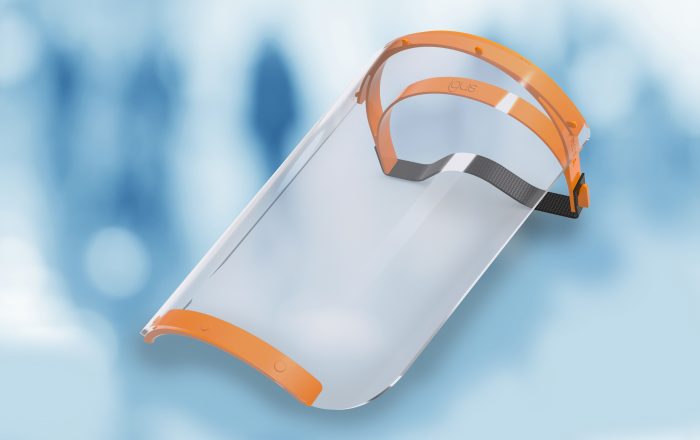A common shield against corona: igus produces headbands for face shields

The protection of medical personnel is currently one of the most important challenges. However, appropriate equipment is not readily available on the market in sufficient quantity and quality. One solution is face shields, among other things, which private individuals and companies are currently producing worldwide using 3D printing. igus has now turned its attention to a central problem in production and is donating the first 100,000 injection-molded headbands.
To protect doctors, nursing staff and other people working directly on patients, 3D printer manufacturer Prusa has developed a face shield and made the design available for free download on the Internet. The aim is to produce the so-called “face shields” on as many 3D printers as possible. The project is already regarded as a success: individuals, maker networks and companies around the world are getting involved and are producing the face shields additively under high pressure. And initiatives such as “Operation Shields Up!” in the USA bring volunteers together on their platforms. igus GmbH participates in this worldwide cooperation and relies on the advantages of the injection molding process.
Inexpensive mass production of face shields possible through injection molding
The construction of a face shield is extremely simple: a 3D-printed plastic carrier holds a replaceable plastic foil that shields the face. The face shields are not a substitute for a face mask that is worn additionally. However, they do provide further protection, especially for the eyes. They also reduce the natural reflex of touching the face and thus coming into contact with the pathogen. Despite the simple construction method, one central challenge remains. “Several makers have asked us whether we, as a tribo-filament manufacturer, can provide them with material for this,” says Tom Krause, Head of Additive Production at igus, looking back. “However, this does not solve the main problems: The production of the headband as a central component in the 3D printer is comparatively expensive and takes more than two hours. This means that only a few parts per device can be produced per day”. Therefore, igus relies on the advantages of another process, injection molding.
The material used is recycled material from iglidur A200. Dr. Thilo Schultes is head of toolmaking and says: “With an appropriate tool, over 10,000 headbands can be produced and delivered per week in the Cologne factory. This enables us to produce the headbands quickly in mass and at significantly reduced costs”. igus shall manufacture the tool at its own expense. The first 100,000 headbands are available free of charge, afterwards they are available at manufacturer’s costs. If net proceeds are achieved, these are donated
For more information, please visit: https://www.igus.com/
News Categories
- » NEWS HOME
- » Automation & Robotics
- » Industry 4.0
- » Material Handling
- » Sensors
- » Quality & Testing
- » Machine Vision
- » Laser & Optics
- » Metalworking
- » Motion Control & Drives
- » Hydraulics & Pneumatics
- » Process Industry
- » Renewable Energy
- » Agriculture
- » Home & Office Furniture
- » Environmental Tech




